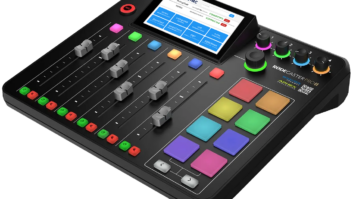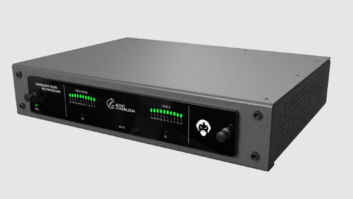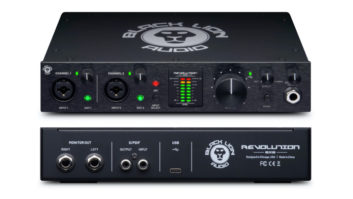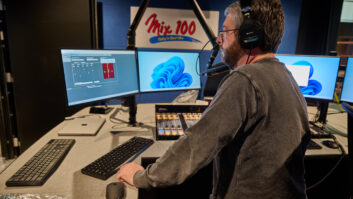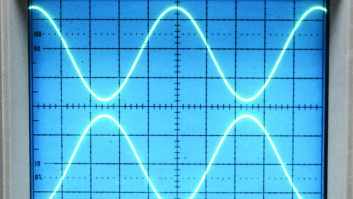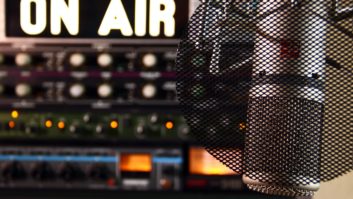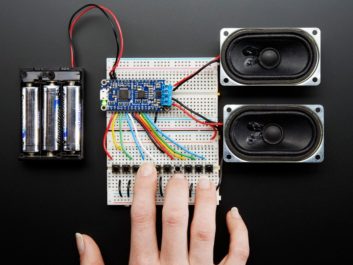
Some of the most fun I’ve had as an engineer was coming up with gadgets to help radio jocks better execute their shows.
Our internet forager Dan Slentz writes in with something for your crazy DJ. It’s a neat little board that resembles an Arduino “computer” circuit, but it’s self-contained and meant for only one thing: to play audio.
No other micro-controller is required, only 3 to 5 VDC. There’s 16 MB of storage on board, so not even an SD card is needed.
The length of stored audio depends on whether the audio is mono/stereo and the sample rate, but audio is stored on the Adafruit FX Sound Board itself; no external drive is necessary.
If you plug in a USB cable to connect your Windows computer, you can drag and drop audio files onto the board as if it were a USB key. Dan and I are sure that readers will find some cool and clever uses, like a sound effects box for the crazy DJ.
Dan likes that the Adafruit Audio FX Sound Board is a cheap solution to playing audio with decent quality, where you might need something repeated. In addition to a sound effects box, add a relay, and the board, which measures 2 inches by 1 inch, can be used to play short messages on a telephone.
Dan adds that an engineer could throw this in a little “jiffy box,” add a few AA batteries and turn it into a line identifier/repeater for tracing audio circuits.
Another idea is a remote audio “bumper box” for sports events. The remote announcers could use this for bumpers leading in and out of local spots.
The Adafruit Audio FX Sound Board can be found on Amazon. The device is in stock and costs about $20–$30 at this writing. If you buy one, please share your application with your fellow engineers. Email me at [email protected] and let me know what you did.
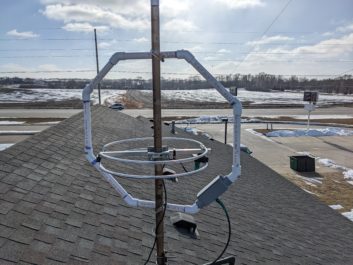
Get loopy!
Last issue I clarified an earlier discussion about the physical construction of Ken Beckwith’s EAS loop antenna. Ken is a field engineer with Educational Media Foundation. His antenna, which we described in a 2019 column, was made using PVC pipe.
Lance Coon of Carroll Broadcasting built Ken’s design and sent us a couple of pictures of his finished product, shown here.
The loop antenna is clustered with an FM receive antenna on the building’s roof. Notice the weather-sealing tape that Lance used to wrap the RF connectors of both antennas. No chance of corrosion or water ingress ruining the connectors or cables.
Lance reports that the antenna works great and says the construction is solid. The antenna has already lasted a night of sustained 50 mph winds, with gusts of 70 mph.
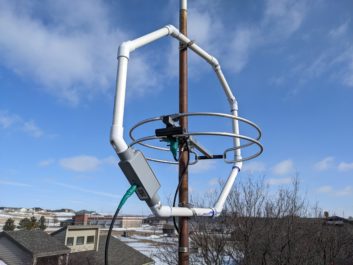
If you are having trouble picking up an AM’s EAS signal, try it. Details are in our Workbench column of Sept. 24, 2019.
A real buzz kill
Ben Dawson, P.E., has been following our discussions about mic cabling.
He commented on John Schmidt’s observations in the Dec. 8, 2021 column. It discussed the use of three-wire-and-shield cables, with the ground carried through on the third wire and the shield tied only at the end that connects to whatever active device is in use.
Ben is a principal at Hatfield and Dawson Consulting Engineers. His experience has been that in high RF and other electrically noisy environments, this technique is commonly employed. At Seattle Center, for example, which was downhill from three analog TV stations, this was the method employed by staff and visiting A/V users to eliminate persistent television sync buzz. Many rock ’n’ roll and county/western roadies also seemed to be aware of this technique.
Back in the 1940s and ’50s, audio users of Cannon “P” connectors — ancestors of XL and UA connectors — sometimes used Pin 2 as the ground. Ben still has a short cable with two P connectors wired for transition to Pin 1 ground from Pin 2 ground. And then there’s the dichotomy as to whether Pin 2 or Pin 3 should be the positive source.
For more interesting reading, check out “A History of Audio Connectors” by Ray A. Rayburn.
(Before even Cannon “O” and “P” connectors, Hubbell twist-lock connectors were used for microphones!)
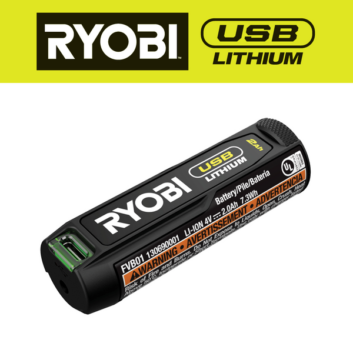
Useful connection
It goes without saying — but we’ll say it anyway — that lithium-ion batteries used in power tools are some of the most compact and dense batteries manufactured.
Now power tool companies Ryobi and DeWalt are exploring USB-C battery options. Specifically, Ryobi is the first manufacturer to add a USB-C charging port on the battery, permitting the same charger and battery to be used to recharge your computer, tablet or phone.
John Bisset, CPBE, has more than 50 years in broadcasting and is in his 32nd year writing Workbench. He handles western U.S. radio sales for the Telos Alliance and is a past recipient of the SBE’s Educator of the Year Award.
Workbench submissions are encouraged and qualify for SBE recertification credit. Email [email protected].





